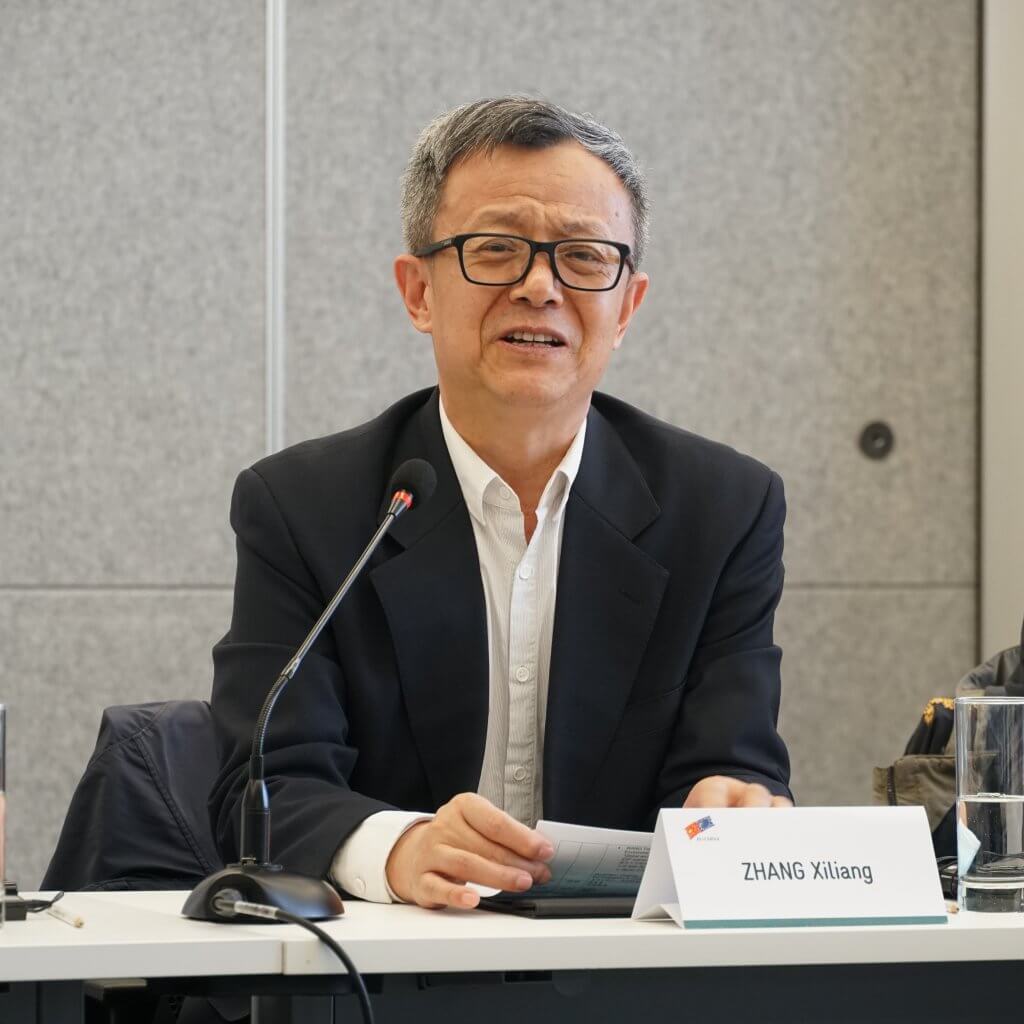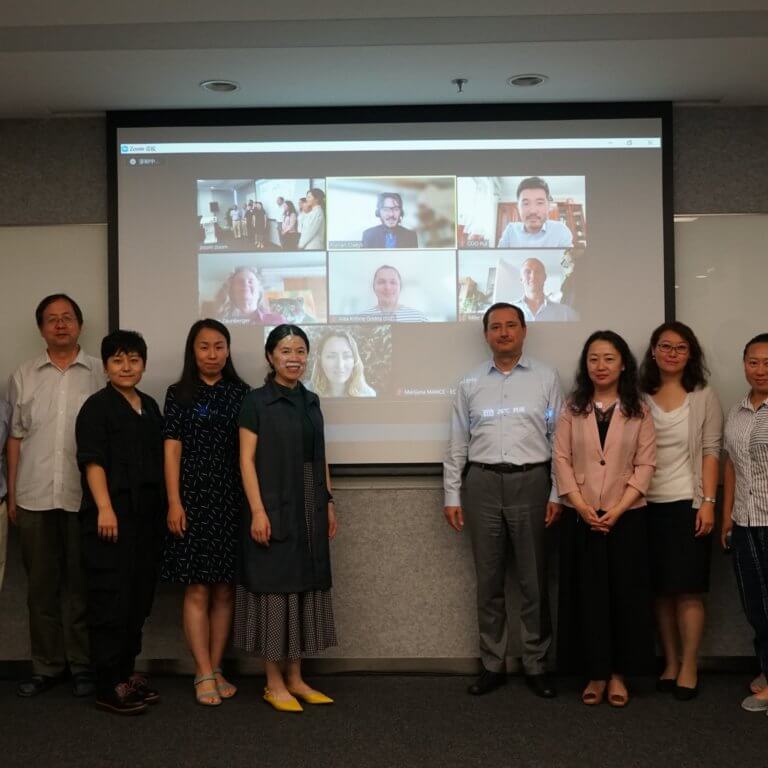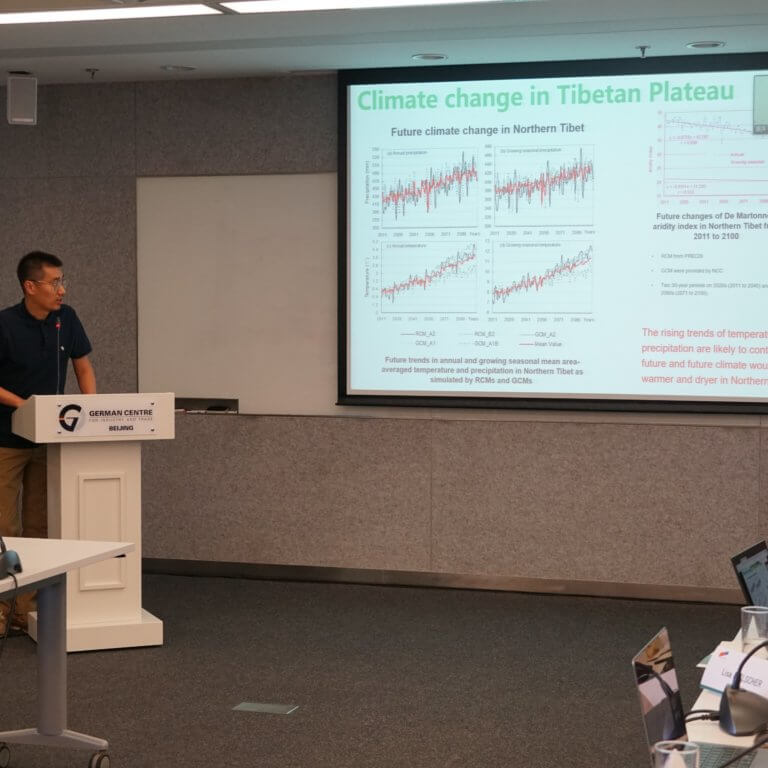
Photo Credit: GIZ
On March 17, 2021 the Strategic Partnerships for the Implementation of the Paris Agreement (SPIPA) held an Expert Dialogue on “Economic assessment of impacts and risk management” in Beijing. This Expert Dialogue was the third in a series of workshops along the themes of “Climate Risks, Impacts and Adaptation”. The workshop was held as a hybrid event with the participation of Chinese experts from Tsinghua University on-site and researchers from the European Commission’s Joint Research Center (JRC) online. The purpose of this event was to facilitate exchanges between Chinese and EU research communities on the topic specified earlier, in order to better understand the socio-economic impacts of climate change and identify the gaps in research status between China and the EU, as well as the areas needing intensified research. Socio-economic modelling highlights the economy and welfare damages caused by climate change therefore bridges the gap between scientific research and real-world policy measures.
In his opening remarks, Zhang Xiliang, Director General of the Institute of Energy, Environment and Economy at Tsinghua University reiterated the relevance of such scientific exchange and thanked the European colleagues for their input. Furthermore, he acknowledged that tackling climate change is one of the top priorities to the Chinese central government and that the outcomes from this series of events would be highly appreciated. Despite the general negative feedback from international community on the 14th FYP in climate’s regard, he stressed that carbon peaking plans at national and provincial levels are actually being actively formulated.

Photo Credit: GIZ
The first session started with a presentation on climate damage risk assessment from a Chinese expert, Liu Changyi, from the Global Energy Interconnection Development and Cooperation Organization. He introduced an assessment of global climate damage in 2°C and 1.5°C scenarios based on BCC_SESM model in IAM framework. During his presentation, he noted that the frequency of climate disasters, especially meteorological and hydrological, has increased in the last three decades, which affected China’s economic performance. While the direct economic loss as a percentage of GDP has decreased overall due to improved risk management, the figure exceeds the global average by around sevenfold (1% in China as compared to around 0.14% globally). Alarmingly, several climate tipping points have already been passed, meaning that the earth system might be on a trajectory to turn into a “hothouse-earth”, which implies catastrophic effects on the climate, ecology, economy, society and human survival. This study suggests that the earlier and more ambitiously the mitigation efforts are progressed, the less climate change incurred damage will result.
These findings were complemented by a study on the climate change damage under different socioeconomic pathway scenarios by an expert from Tsinghua University’s Institute of Energy, Environment and Economy. Wang Tianpeng said, that the extent of global climate damage is closely related to the global warming level. By 2100, the global GDP loss rate would exceed 10% in the most extreme scenario. Furthermore, there are regional disparities. For example, while India and Southeast Asia would suffer the largest negative GDP shock from climate change in the underlying models, Canada is predicted to be least affected. China would be moderately negatively affected compared to the rest of the world.
Similar results were obtained for the European Union. Juan-Carlos Ciscar from JRC introduced the integration of economic impacts in the JRC PESETA IV project. PESETA IV is a collective modeling research project seeking to better understand the implications of climate change for the EU. The study concluded that there would be large welfare losses in Europe, due to heat waves, floods and droughts, which are projected to become more frequent and severe. Again, there are large regional disparities within the European Union. Furthermore, the results probably underestimated the full extent of climate change. On a more positive note, the study also suggested that mitigation and adaptation measures still have large potential to reduce the impact of climate change.
The second part of the workshop focused on economic modelling of sectoral impacts. Cai Wenjia from the Department of Earth System Science at Tsinghua University illustrated the health impacts of climate change in China, based on the findings from the Lancet Countdown. She explained that the danger lies in the compounded risk, which stems from the simultaneous emergence of multiple health impacts, which again, are distributed quite unevenly across China. Targeted adaptation measures at the provincial or communal level as well as strengthened inter-ministerial cooperation are necessary to improve health emergency preparedness, enhance scientific research and raise awareness of the risks. She also briefed on the “China Lancet Countdown” project, which seeks to track China’s progress across all dimensions of health and climate change and will be updated annually with provincial-level details.
Xie Wei, a researcher from the China Center for Agricultural Policy at Peking University, focused on the impacts of climate change on China’s agriculture sector especially the value chain and the overall economy. Agriculture is a sector prone to climate change but often does not receive the proportionate amount of attention. He noted that imperfect global trade and domestic markets can amplify the adverse impacts of climate change in agriculture sector.
A multi-hazard object-based risk analysis of transport infrastructures in Europe was introduced by Eamonn Mulholland, a researcher of the JRC. According to the results, rail infrastructure is at particular risk of river flooding while the risk from extreme heat on infrastructure is relatively lower. On the other hand, extreme temperature has high impacts on roads in the future because they were not built with future temperatures in mind. This in turn would incur unplanned economic loss correspondingly. He acknowledged that the introduced model still has some climate hazards to be integrated, such as coastal flooding and droughts.
An occupational analysis of heat stress and productivity of labor in Europe, was introduced by JRC Researcher Wojtek Szewczyk.
Overall, it became clear that climate change has become an economic reality and that grave welfare losses are inevitable if mitigation and adaptation efforts are not made early on.




